Doctors Blog
Do I need custom foot orthotics?
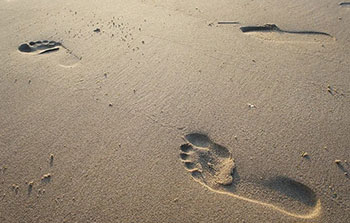 Most people can benefit from custom foot orthotics, but whether you NEED them can be discussed with your doctor. A foot & ankle specialist will examine your feet and evaluate your biomechanics and foot function. Your foot structure, weight, activity level, medical conditions, and foot deformities/ areas of pain (bunion, hammertoe, callus, pinched nerve, heel spur, etc.) all play a role in determining your need for custom orthotics.
Most people can benefit from custom foot orthotics, but whether you NEED them can be discussed with your doctor. A foot & ankle specialist will examine your feet and evaluate your biomechanics and foot function. Your foot structure, weight, activity level, medical conditions, and foot deformities/ areas of pain (bunion, hammertoe, callus, pinched nerve, heel spur, etc.) all play a role in determining your need for custom orthotics.
What options do I have?
1. Over-the-counter (OTC) orthotics might be a solution for some. Well-made brands can offer support and cushioning, but they're "one-size-fits-all" and won't provide personalized correction. While less expensive, they will need to be replaced more often. Ask your doctor if they're an option for you, and if so, what style they recommend.
2. Custom foot orthotics are recommended when your feet need extra help to function properly. Conditions like flat feet or high arches are common examples. Without support, your muscles, tendons and ligaments work harder to absorb the shock of your body weight. Over time, lax ligaments and instability contribute to conditions like arthritis.
If you experience foot pain, discomfort, or fatigue, it's time to schedule an appointment with a foot & ankle specialist. Custom orthotics may be the solution you've been looking for.
Common causes of heel pain
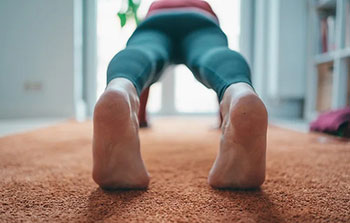 Heel pain can significantly impact daily activities and mobility, making it essential to identify the cause and seek appropriate treatment.
Heel pain can significantly impact daily activities and mobility, making it essential to identify the cause and seek appropriate treatment.
Heel pain presents as a symptom of many conditions, and it's crucial to identify the underlying cause before starting any treatment.
Common causes of heel pain:
- Achilles tendinitis
- Bone contusion
- Bursitis
- Fat pad atrophy
- Growth plate injuries
- Haglund's deformity/ pump bump
- Infection
- Inflammatory arthritis (gout, rheumatoid arthritis, ankylosing spondylitis, spondyloarthropathies)
- Nerve entrapment
- Osteoarthritis
- Peripheral Neuropathy
- Plantar fasciitis
- Plantar fibromatosis
- Posterior impingement
- Stress fractures
- Tumors or growths
When to seek treatment
If you experience persistent or severe heel pain, or discomfort that is affecting your daily life and ability to stay active, it's time to see a foot & ankle specialist. A thorough evaluation, physical exam, imaging (e.g. x-rays, MRI), and medical history review will be performed. Based on your diagnosis, treatment recommendations can be tailored to your specific condition and needs.
Failure to identify the cause of your pain can exacerbate the problem and/or delay proper medical care, ultimately leading to a longer road to recovery.
Osteoporosis Prevention
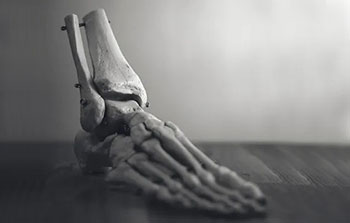 How to prevent Osteoporosis & its progression:
How to prevent Osteoporosis & its progression:
- Proper Nutrition: A well-balanced diet rich in calcium and vitamin D is essential for bone health. Calcium strengthens bones, while vitamin D aids in calcium absorption. If needed, consult with a healthcare professional to determine if calcium and vitamin D supplements are necessary.
- Regular Weight-Bearing Exercise: Weight-bearing exercises help stimulate bone growth and increase bone density. Activities such as walking, jogging, dancing, and aerobics are beneficial for strengthening the bones in the foot and ankle. Engaging in these exercises for at least 30 minutes a day, several times a week, can yield positive results. Weight lifting or strength training also help stimulate bone growth and increase bone density, reducing the risk of fractures associated with osteoporosis.
- Fall Prevention: Preventing falls is crucial for individuals with osteoporosis. Wearing appropriate footwear with good traction and support is important for stability.
- Lifestyle Modifications: Avoid smoking and excessive alcohol consumption, as these habits can impair bone health. Smoking has been linked to decreased bone density, while excessive alcohol intake can interfere with calcium absorption. Maintaining a healthy weight and minimizing stress on the feet and ankles through proper body mechanics, posture, and supportive shoe wear can also be beneficial.
- Consultation with a Healthcare Professional: Regular check-ups and consultations with a healthcare professional are essential for early detection, diagnosis, and management of osteoporosis. We can provide personalized guidance on preventive measures and recommend appropriate screenings and treatments.
By adopting a proactive lifestyle that includes exercise and healthy habits, you can optimize bone health and reduce risk of osteoporosis-related complications.
Combat sweaty feet this summer!
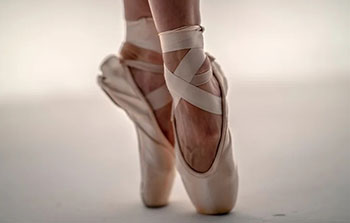 Excess moisture in shoes can hinder performance, cause discomfort, and increase risk of blisters and fungal/ bacterial infections of the skin and nails. Here are some expert recommendations on how to keep your foot-sweat under control:
Excess moisture in shoes can hinder performance, cause discomfort, and increase risk of blisters and fungal/ bacterial infections of the skin and nails. Here are some expert recommendations on how to keep your foot-sweat under control:
- Choose the right shoes. Shoes made from leather, suede, nubuck, canvas, and other natural materials are breathable, allowing for air circulation and prevention of excessive sweating . If these materials aren't an option, look for synthetic fabrics with breathable technologies like mesh.
- Rotate your shoes. Avoid wearing the same shoes every day to allow them to dry completely between wears. To help shoes dry faster, put them in direct sunlight fora few hours and add dryer sheets between wears. You can also add baking soda inside the shoes (if getting white residue on socks/feet won't bother you).
- Moisture-wicking socks. Wearing the proper socks for your sport or activity can make a huge difference in comfort-level and dryness. Socks made of materials such as polyester, nylon, and wool wick away moisture and are best for keeping feet cool, dry, and comfortable. (Cotton socks tend to trap moisture and keep socks damp.)
- Good hygiene. Wash your feet daily with anti-bacterial soap (like Dial), rinse well, and be sure to dry them completely, especially between your toes.
- Powder to the rescue. If you've done all the above and still have excessive moisture, add powder to the mix. Look for products with baking soda, zinc oxide, arrowroot, or kaolin clay for moisture absorption.
If you have specific concerns or conditions, consult with a healthcare professional for personalized recommendations.
Check your Soles: What to know about Flatfeet
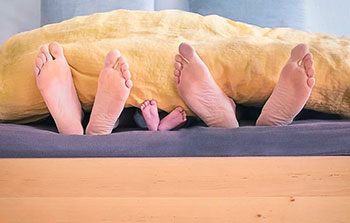 Flat feet can be inherited or develop over time with age, sports injuries, certain medical conditions, ligament/tendon damage or degeneration, increased weight, pregnancy, or from compensation due to inadequate support.
Flat feet can be inherited or develop over time with age, sports injuries, certain medical conditions, ligament/tendon damage or degeneration, increased weight, pregnancy, or from compensation due to inadequate support.
Flatfeet are seen in both children and adults and may be asymptomatic or symptomatic. For asymptomatic cases (especially in children), it's important to keep prevention in mind:
1. Eat healthy and stay hydrated to keep your cells functioning properly and help your body repair damage
2. Keep your muscles strong by exercising regularly, paying particular attention to ankle strengthening exercises
3. Wear supportive shoes when you're active
Flatfoot deformity can be progressive and may become symptomatic over time. Common complaints include achy, tired feet, or foot cramping after long periods of standing. Bunions, hammertoes, and arch collapse may also contribute, adding to the "flat" appearance of the feet.
If you have symptomatic flatfeet, the first step is to determine the cause. A proper evaluation with x-rays can answer questions and help direct a treatment plan. Every flatfoot is different! Treatment should be personalized and depend on your specific diagnosis.
For example, if the cause is:
- Tight muscles causing stress, destabilizing joints in the foot, a proper exercise program with an orthotic may be needed.
- Tendon degeneration, advanced imaging (MRI) may be needed to evaluate the extent of damaged tissue and assessing need for repair.
- Coalition of two bones, short-term immobilization in a boot or bracing may be recommended before jumping to surgery.
- Abnormal joint motion leading to arch collapse and instability, custom orthotics may be best for motion control and support.
-Chronic bone malalignment with abnormal joint wear and cartilage loss, bracing or surgery may become options.
Flatfeet aren't as simple as they seem. Your diagnosis might be more complex than a neighbor or even a family member! Custom orthotics are often the best non-surgical solution to help control abnormal motion in your feet, alleviating painful symptoms associated with flatfeet.
Prevention IS the best medicine! Schedule a consultation with us to help prevent worsening of symptoms.
